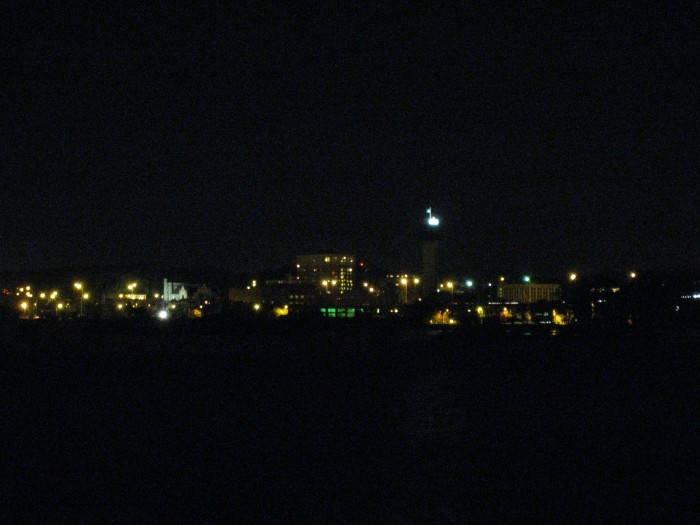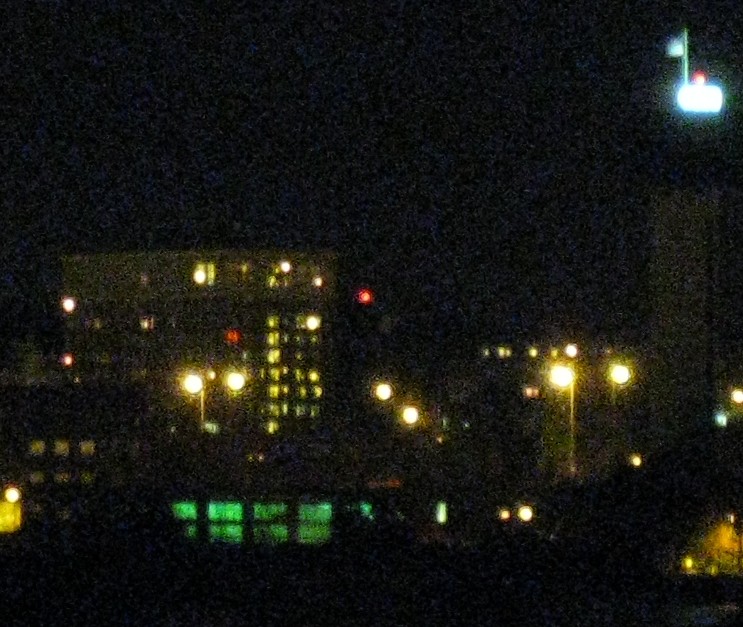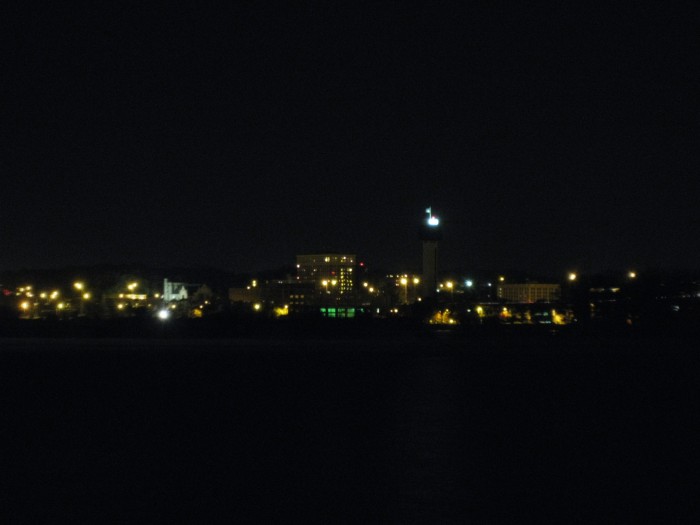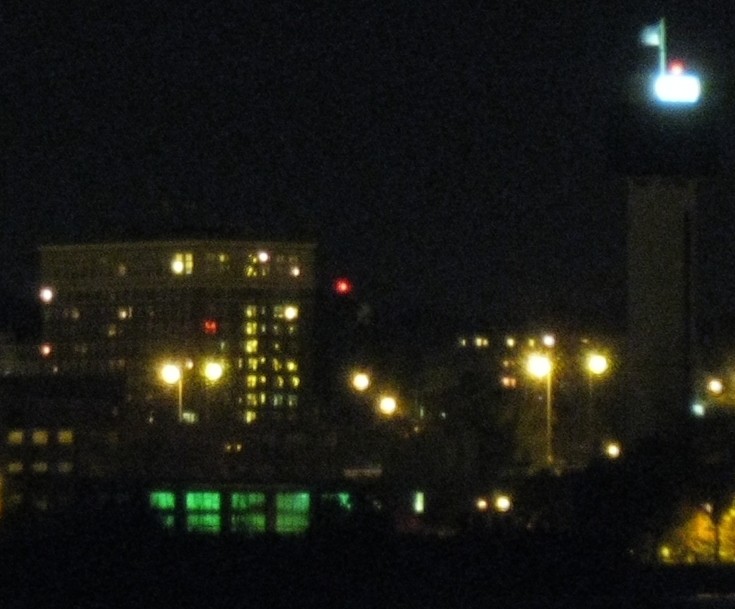<>A common way to get good photos of low-light subjects using digital cameras is via “stacking” the images. The images, if properly overlaid, will line up and the noise will be eventually cancelled out, leaving only signal (the image you were actually after). This process is very common with astrophotography. However, it can also be used with landscapes and other dark, motionless subjects.
The layers need to be stacked atop each other such that they precisely line up. Additionally, the layers need to be set to varying levels of opacity… the background image set to 100% opaque, with the images becoming less opaque as you approach the outermost layers. I use this set of settings:
<>As an example, I took ten photos from the Iowa shore of the Mississippi river, looking into Illinois. A tripod was used to assure that the images would be of a fixed view. They all pretty much look like this:
With a closeup that looks like this:
But after stacking ten images, this is the result:
With this for a closeup:
Pretty neat, eh?
2 Responses to “Photo stacking”
Sorry, the comment form is closed at this time.





Neat-o!
[…] these photos were prepared via the stacking process (ten images each) that I described here. Here are before-and-after detail […]